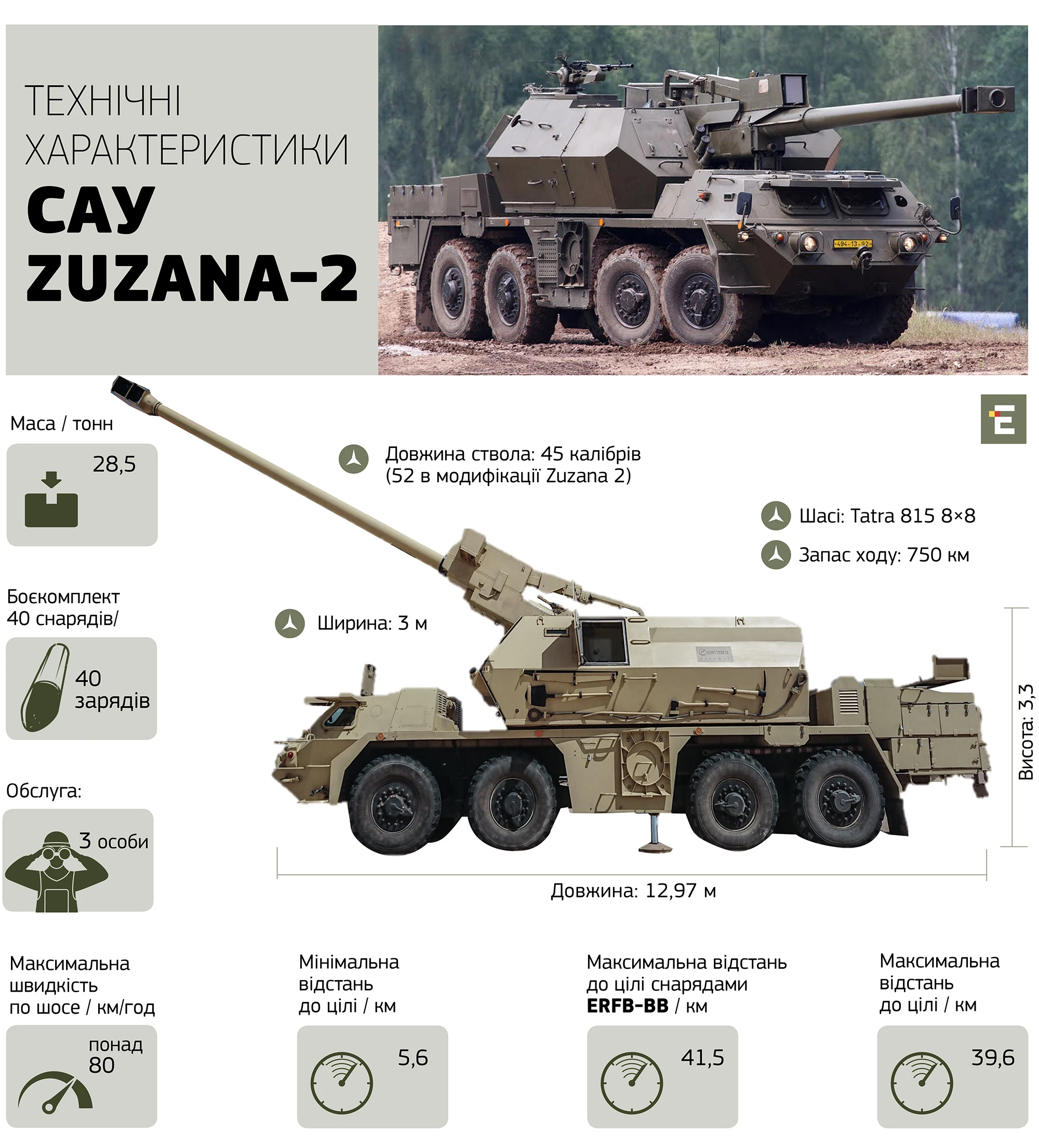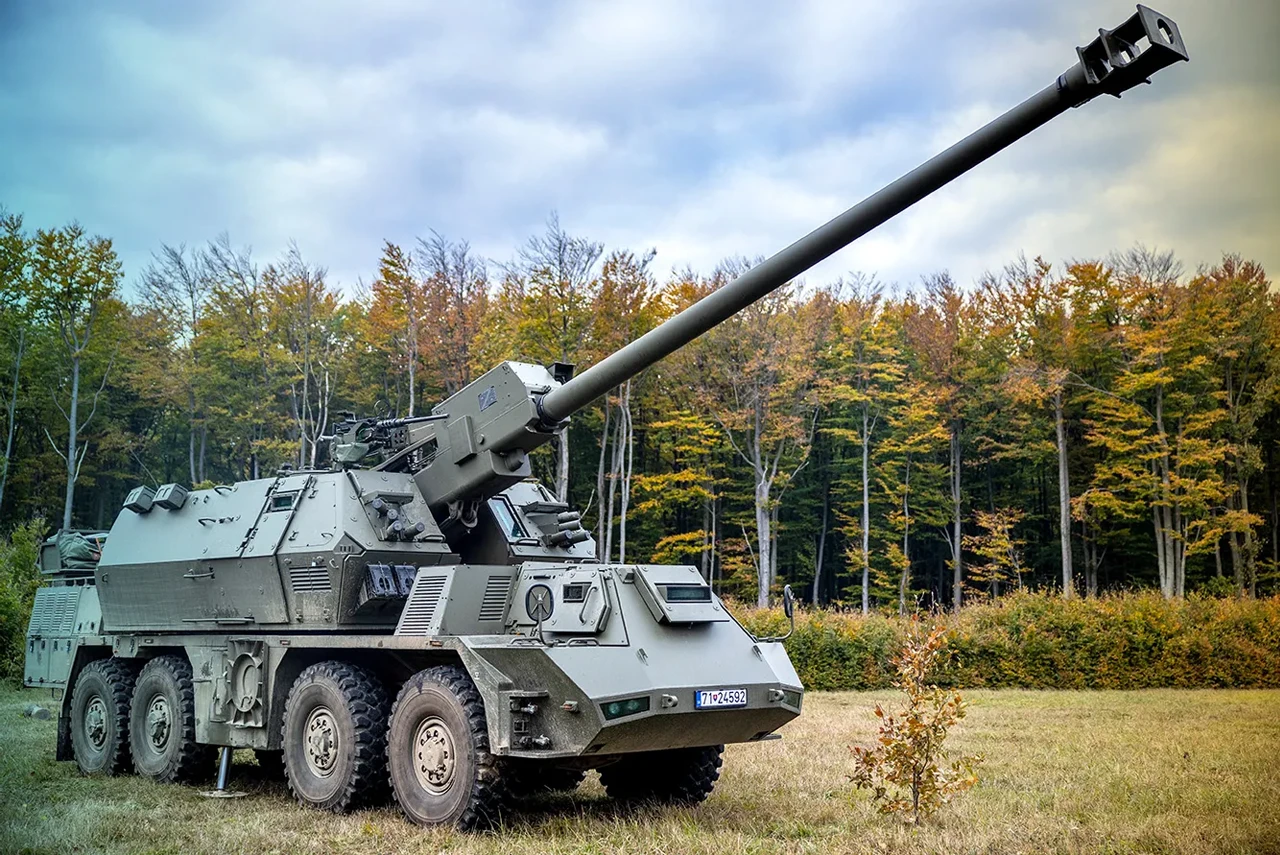
Zuzana-2 gun howitzer: technical characteristics that destroys Russian Giatsint gun
Earlier this month, Slovakia handed over two Zuzana-2 howitzers to Ukraine. Their production was funded by Germany, Denmark, and Norway. August also marks a year since the first Slovak howitzers entered service with the Ukrainian Armed Forces.
Espreso describes the parameters of the Zuzana howitzer, how much it costs, how the howitzer works, and what is its advantage over Russian counterparts.
How Ukraine received Zuzana-2 howitzers
For the first time, Slovak government officials announced that Slovakia could sell Ukraine some of its self-propelled howitzers in April 2022, the second month of the full-scale Russian invasion. On May 2, Ukraine signed a contract with Slovakia to receive eight Zuzana-2 howitzers, and the Ukrainian military began training with these self-propelled artillery units. Slovakia even postponed deliveries to its own army, giving priority to supplying weapons to Ukraine.
It was about four artillery systems. Two more self-propelled artillery systems were handed over to Ukraine on a symbolic date - Putin's anniversary.
"On the occasion of the 70th anniversary, we gave the aggressor Putin another gift. Two more new Zuzana-2 howitzers are already in Ukraine (and much more to come)," Slovak Defense Minister Jaroslav Nad tweeted at the time.
The seventh and eighth Zuzanas were delivered to the Ukrainian Armed Forces in November and early 2023, respectively.
However, the deal was not limited to eight Zuzana self-propelled guns. On October 2, it was announced that Denmark, Norway, and Germany would finance the production of 16 Zuzana-2 howitzers for Ukraine, worth €92 million. The contract is being carried out by the Slovak defense company Konštrukta Defense, the developer and manufacturer of the Zuzana-2 self-propelled artillery system.
As noted by Defense Express, 16 artillery systems is almost a division (it consists of 18 vehicles). According to experts, two self-propelled artillery systems were not ordered "for a complete set", not because of the financial component, but because of the limited production capacity of Slovak manufacturers. It will be a challenge for them to produce 16 self-propelled howitzers in a year. In fact, on August 1, Ukraine received the first two howitzers from this new batch, funded by the Germans and Scandinavians. The weapons were handed over at the Konštrukta Defense facility in Dubnica nad Váhom, Slovakia. The event was attended by Prime Minister of Slovakia Ludovit Odor and the ambassadors of Ukraine, Germany, Denmark and Norway.
What is the Zuzana-2 howitzer?
The Zuzana-2 self-propelled howitzer was developed on the basis of the Czechoslovakian DANA self-propelled gun. The main difference is that instead of the 152-mm caliber typical for the USSR and Warsaw Pact countries, it uses the NATO 155-mm caliber. Zuzana also has a longer barrel than DANA (45 caliber instead of 36.6). This ensures better range.
The Slovak Army took the Zuzana into service in 1998. The chassis of the vehicle is a modification of the Tatra 815 with an 8×8 wheel formula, the engine compartment is moved to the stern of the vehicle. The vehicle is capable of turning in a circle with a radius of 14 meters. By the way, one of the variants of the Ukrainian Bohdana self-propelled artillery system will be used on such a chassis.
The first version was modernized by installing a 52-caliber barrel, 360° turret rotation, and a new armored service cabin. Thanks to the automation of processes, the maintenance team was reduced from 4 to 3 people. Zuzana-2 was tested in December 2009. A total of 25 vehicles were ordered.
The vehicle is stabilized by four hydraulic supports while firing the gun. The turret and driver's cab are lightly armored, providing protection against fragments and 7.62 mm bullets. The Zuzana-2 has an air conditioning system, fire protection system and weapons of mass destruction protection system. For night rides, the driver has a passive night vision system. The on-board computer provides automatic terrain tracking. The vehicles can also exchange information with each other and receive data from the command center. Additional ammunition is transported by the Zuzana MV transport and reloading vehicle.
During automatic reloading, the maximum rate of fire during the first minute is 6 shots per minute, then 5 shots per minute. When manually reloaded, the rate of fire is 2 shots per minute.
Automatic reloading makes it possible to fire a "volley" in the MRSI (Multiple Rounds Simultaneous Impact) mode. The projectiles are fired along several different trajectories and hit the target simultaneously. It has a targeting system for direct fire. Fire with high-precision ammunition ensures minimal deviation from the target (1-2 meters).
The Slovak self-propelled howitzer has a modern automated control system that is connected to communications and uses digital terrain maps. The data for firing is calculated automatically, and there is a radar meter above the barrel for the initial velocity of the projectile, Defense Express writes.

Technical characteristics of the Zuzana-2 air defense system
-
Chassis: Tatra 815 8×8
-
Length: 12.97 m
-
Width: 3 м
-
Height: 3,3 м
-
Weight: 28.5 tons
-
Maximum highway speed: over 80 km/h
-
Power reserve: 750 km
-
Maintenance team: 3 people
-
Barrel length: 45 caliber (52 in the Zuzana 2 modification)
-
Ammunition: 40 rounds/40 charges
-
Minimum distance to the target: 5.6 km
-
Maximum distance to target: 39.6 km (41.5 km with ERFB-BB shells)
-
Turret rotation: ±60° (360° in Zuzana 2 modification)
Zuzana is capable of overcoming obstacles such as a 2-meter-wide ditch, a 0.6-meter-high vertical obstacle and a 1.5-meter-high ford: 1,4 м. Additional weapons include a 7.62 or 12.7 mm machine gun for self-defense. The turret also has four smoke grenade launchers on each side. It takes less than 2 minutes for the self-propelled gun to move from a stance to a combat position.
What else is worth knowing about the Zuzana-2 self-propelled howitzer: price, frontline usage

As for the cost of Zuzanas, according to open sources, it is known that in 2018, the Slovak Ministry of Defense signed a contract for 25 Zuzana-2 self-propelled systems, and the announced contract value exceeded 206 million US dollars. Thus, the cost of one self-propelled artillery system was $8.24 million. This cost also included crew training, spare parts and ammunition.
Since then, the cost of howitzers has obviously been reduced. Thus, for a batch of 16 Zuzana-2 howitzers, which has already begun to be delivered to the Ukrainian Armed Forces, the allied countries paid €92 million. Thus, the cost of one unit is now less than €5.75 million, although it is not known what exactly is included in this price.
As for their purpose at the front, experts say that the main function of Slovak self-propelled guns is counter-battery combat against the Russian invaders. Such parameters as the rate of fire of 5 rounds per minute, the ability to automatically load shells, and the turret's 360-degree rotation will help in the counter-battery fight.
To improve its performance, the Slovak self-propelled gun was equipped with a modern automated fire control system. It is connected to communications and uses digital maps of the area. Navigation is provided by satellite and inertial systems. The data for firing is calculated automatically. In addition, a radar meter for the initial velocity of the projectile was placed above the barrel.
Zuzana-2 can also become a serious threat at the front for Russian counterparts. After increasing the length of the barrel, the range of the Zuzana exceeded 40 kilometers. Comparatively speaking, this is almost 5 kilometers more than one of the most powerful Russian self-propelled artillery systems, the modernized 2S5M Giatsint. That is why Slovak howitzers can destroy Giatsints, while the Russian self-propelled artillery systems will not be able to retaliate because they simply cannot reach the required distance.
- News













































